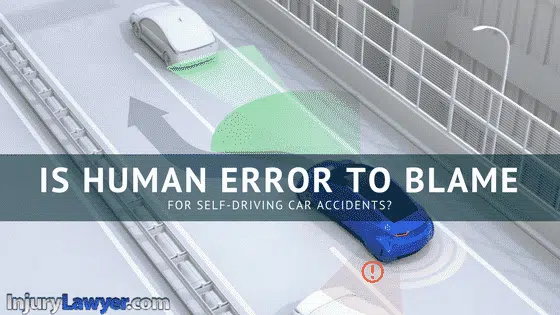
Traffic Collisions Involving Autonomous Vehicles Could Have More to Do with Human Behavior than Automobile Programming
When we think about the reasons that car accidents happen, many of us think about the risks associated with human error, from intentional behaviors associated with aggressive driving to omissions behind the wheel linked to distracted driving. According to a recent report from CNBC, one of the major reasons that autonomous vehicles are not ready for the road, and could be involved in a car accident, does not have to do with whether the technology exists to allow self-driving cars to navigate the roads safely on their own. Rather, the problem is that autonomous vehicles cannot yet be programmed to adapt to human error and unpredictable human behavior in human-piloted vehicles.
As the report explains, self-driving cars are designed to go the speed limit. This means that an autonomous vehicle will not exceed the posted speed limit on any particular road, but all around that self-driving car, human-piloted cars may be exceeding the speed limit. In fact, “humans routinely exceed [the speed limit] by 10 to 15 miles per hour,” according to the report. Human drivers also regularly cross the double yellow line on roads and highways, but an autonomous vehicle would never do this. Self-driving cars would need to find a way to adapt to poor human driving behaviors in order to avoid traffic collisions.
In addition, the report suggests, programmers of autonomous vehicles would need to find a way to allow the car to compensate for the “odd local traffic customs to which humans quickly adapt.” Given these idiosyncratic human driving behaviors, “experts say it will take many years before robo-taxis can coexist with human-piloted vehicles on most side streets, boulevards, and freeways.” Indeed, the article underscores that, in order for autonomous vehicles to avoid crashes, programmers will need to learn teach driverless cars to “understand social graces.”
Human Error and Car Accidents
What should you know about car crashes and human error? First, we should take a look at key traffic collision facts from 2015 from the National Highway Traffic Safety Administration (NHTSA):
- Car accident fatalities rose from 32,755 in 2014 to 35,092 in 2015;
- Alcohol consumption played a role in around 34% of all crashes; and
- Speeding played a role in more than 27 percent of all fatal accidents.
As you can see, human choices played a role in a high percentage of fatal car accidents in 2015 (the last reporting year for NHTSA). A fact sheet from Stanford University’s Center for Internet and Society reports that “human errors and deficiencies” were either a “definite or probable cause” in anywhere from 90% to 93% of all car accidents. Some studies, according to the fact sheet, even indicate that human error either caused or contributed to as much as 99% of all U.S. motor vehicle collisions (including driver error and other forms of human error).
Time will tell if driverless cars will be a safer choice for drivers. In the meantime, if you were injured in a car accident, contact an experienced car accident lawyer to determine your rights.



